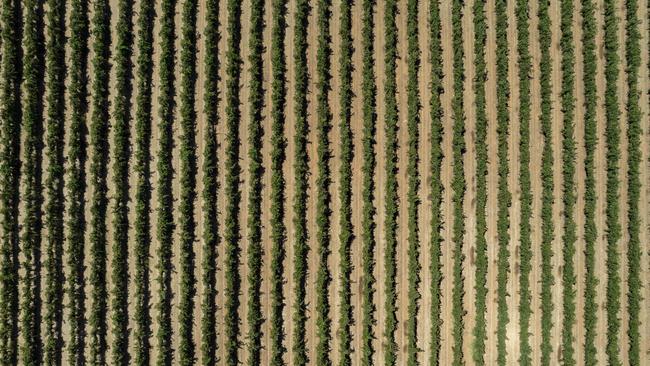ABARES: Wine production, exports forecast to plummet
Australian wine grape growers are entering uncharted territory as prices plummet further while China remains off-limits.
Australian red wine prices are expected to plummet to levels not seen since before the Chinese market opened up, leading to an exodus of growers and a major contraction in production volumes.
Just like the grapes left to wither on the vine, the value of wine production is expected to have shrivelled by a third to $749 million in the space of a year come July, according to new Australian Bureau of Agriculture and Resource Economics and Sciences research.
For the first time, the federal government’s agricultural research agency has produced a report on the wine industry to address an imbalance of information available to growers about their industry and its future, with pricing predictions and production volumes.
Australian Grape and Wine chief executive Lee McLean said it provided for difficult reading.
“But it probably comes as no surprise for growers living it right now. What we’re seeing, particularly in the inland regions, is that prices have really dropped down considerably, there are issues around contracts and full tanks,” Mr McLean said.

ABARES says average wine grape prices are forecast to fall 14 per cent to $547 a tonne in 2022-23, with reds down 20 per cent to $566 a tonne.
This follows a steep decline set off in November 2020 when China introduced anti-dumping tariffs of more than 200 per cent on bottled Australian wine.
“In addition to the loss of the Chinese market, global demand for red wine varieties has fallen. This has strongly reduced the incentive for wineries to purchase red grapes, driving down prices. Lower global demand for bulk red wine, large carry-over stocks in Australia and falling shipping costs mean that Australian bulk reds are currently the most competitively priced in the world,” the report said.
Wine exports are also forecast to fall 20 per cent to $1.8 billion next year due to a small vintage and less wine being sold on international markets.
Tellingly, ABARES does not predict a reopening of the Chinese market, which the industry is desperately holding out for.

Mr McLean said it was “entirely reasonable” ABARES researchers did not factor access to China into its equation for the future, but by his own assessments he believes it will reopen.
“I don’t want to put a short-term time frame on it,” he said. “The issue for me, even if we do get rid of the import duties, is we’re probably not going to see a return to a $1.2 billion market.
“Firstly the market in China has probably changed … (and) since we’ve been locked out, a number of other producer nations have filled that gap, and once you’ve lost that market share it’s really hard to get back in.”
Riverina Winegrape Growers chair Bruno Brombal is deeply concerned about the metal health of growers across Australia’s inland regions, which produced the lion’s share of red once flowing into China.
“Growers can’t afford to pay their bills,” he said. “In 2012 the industry collapsed, but not this bad. In 2019 and into 2021 prices started dropping, now it has collapsed. This is the worst I’ve ever seen it in my lifetime.”
One of the few windows of opportunity was the Indian market, he said, but the pay off of investment now may not be realised for years.




